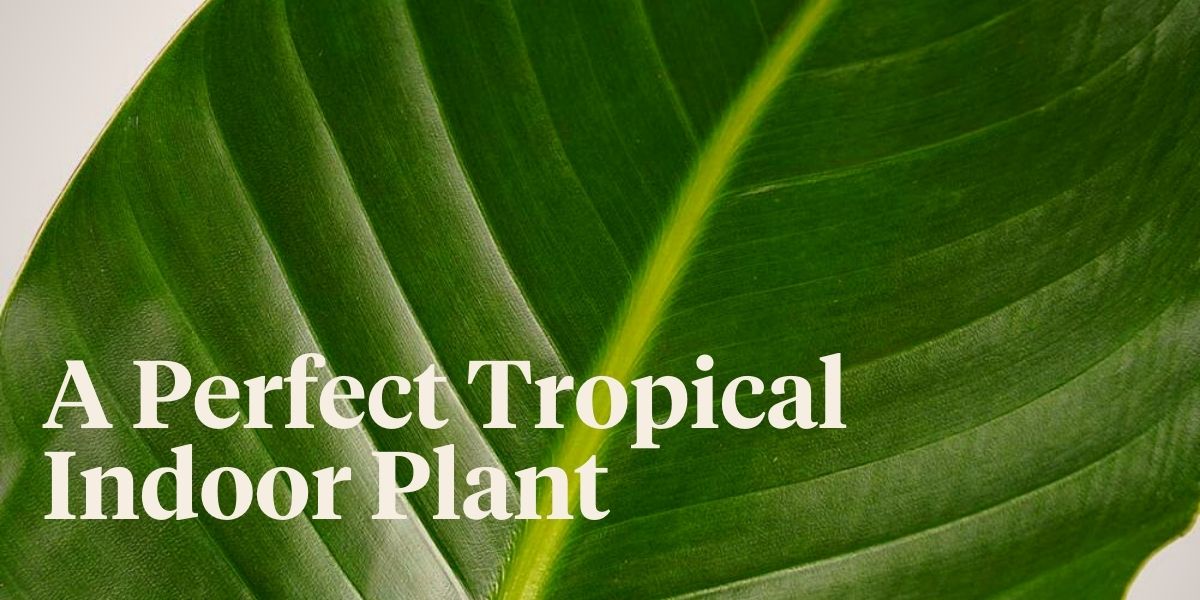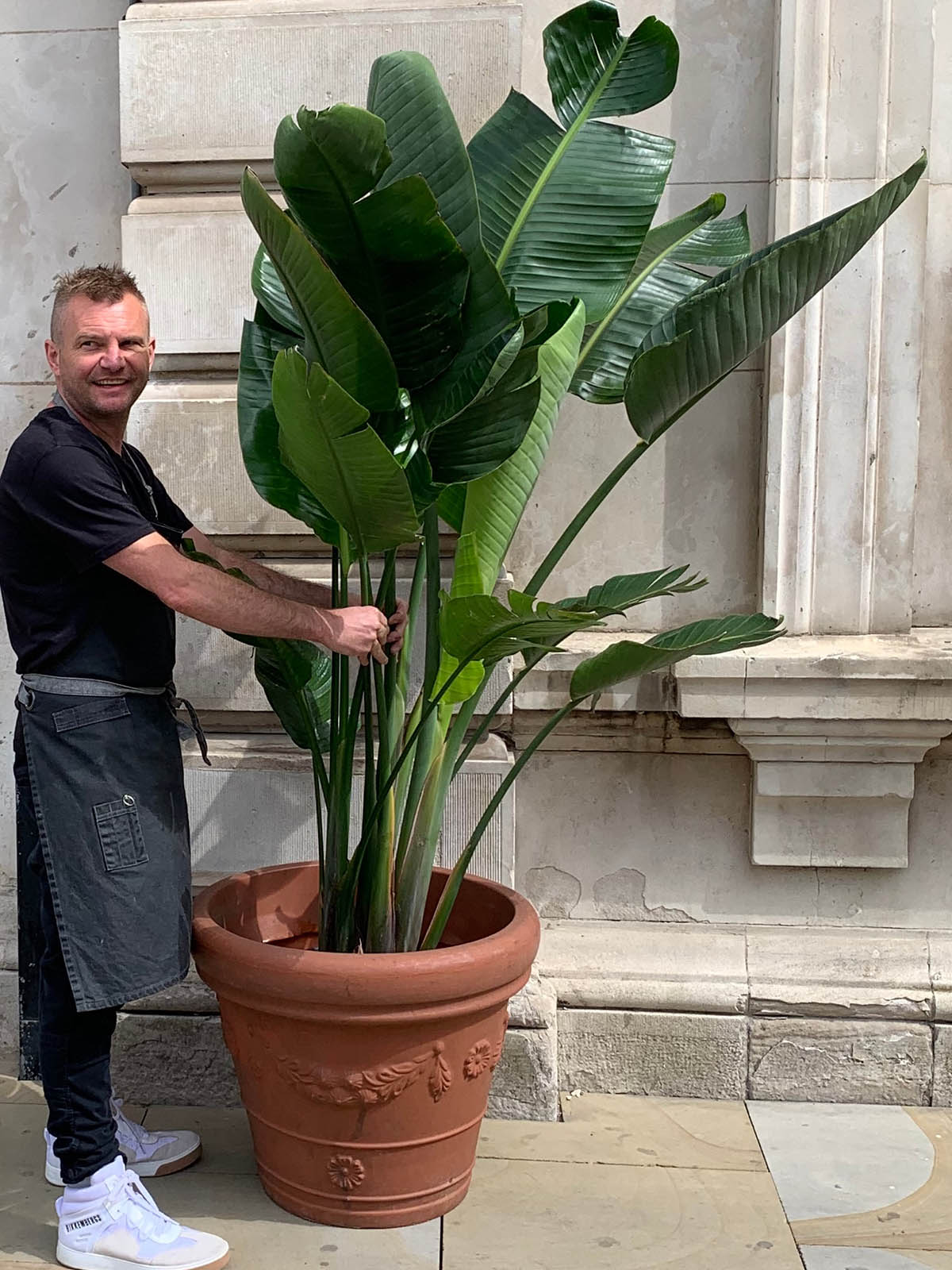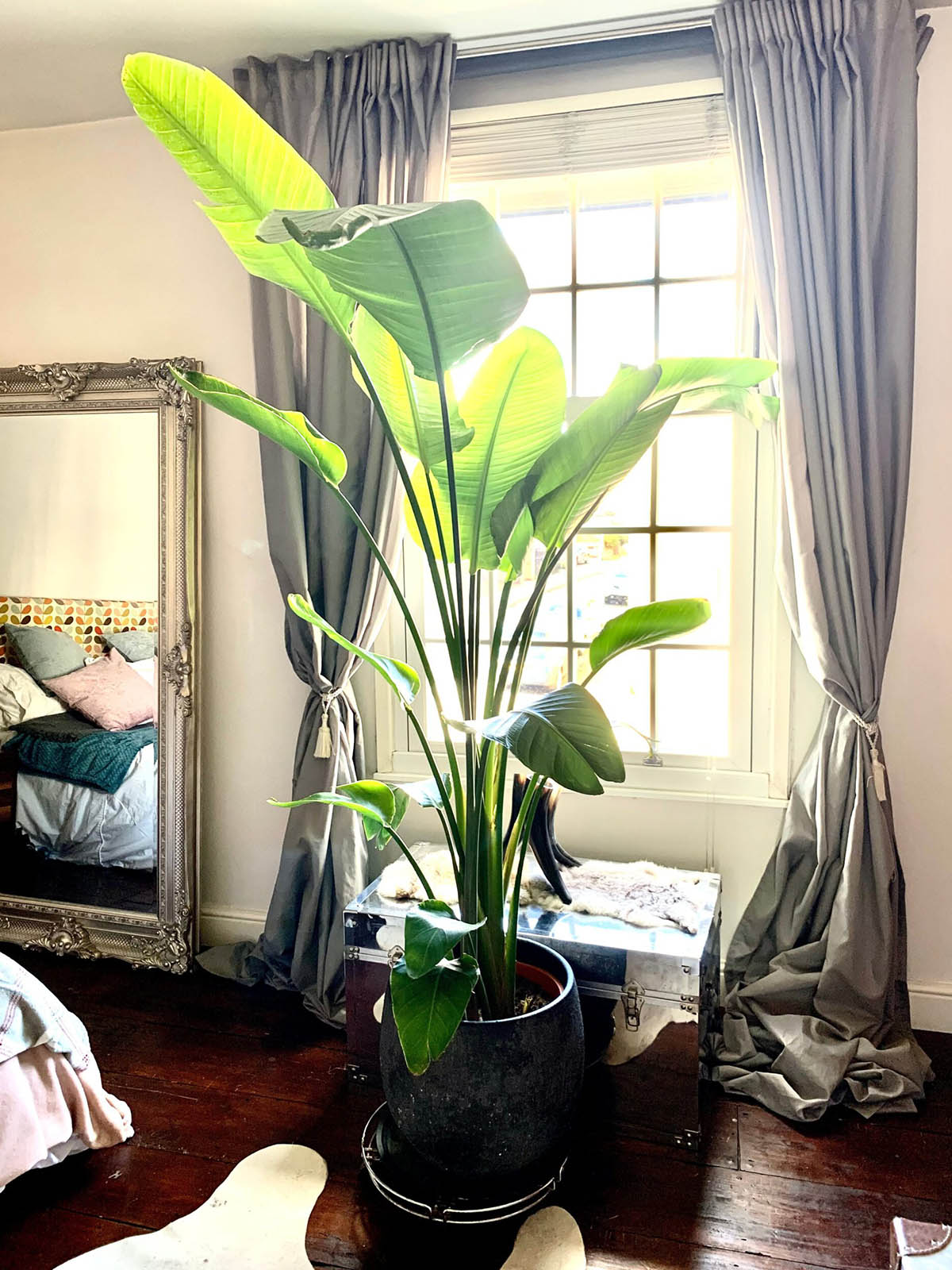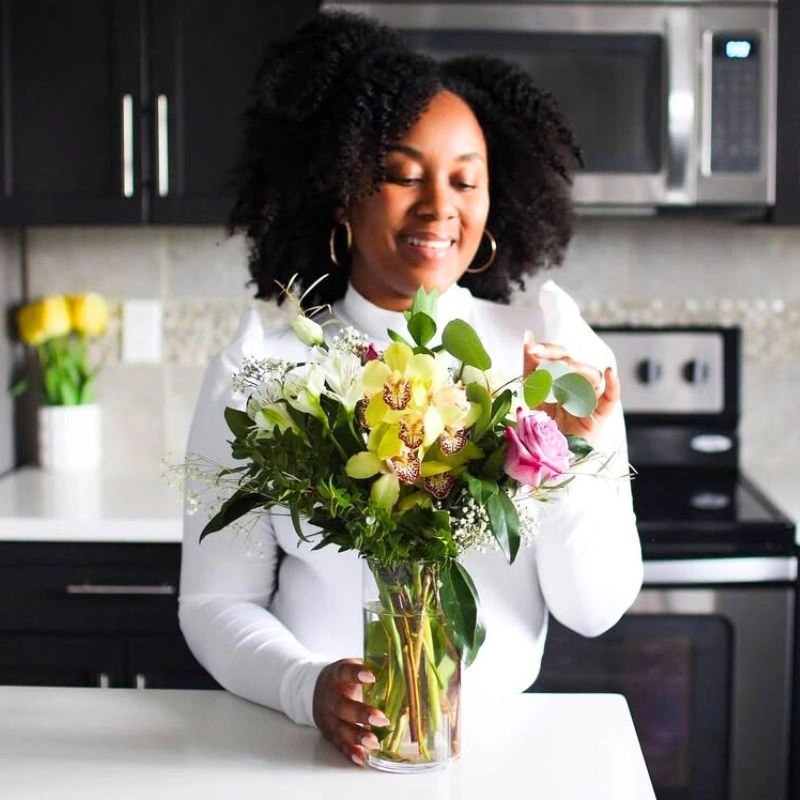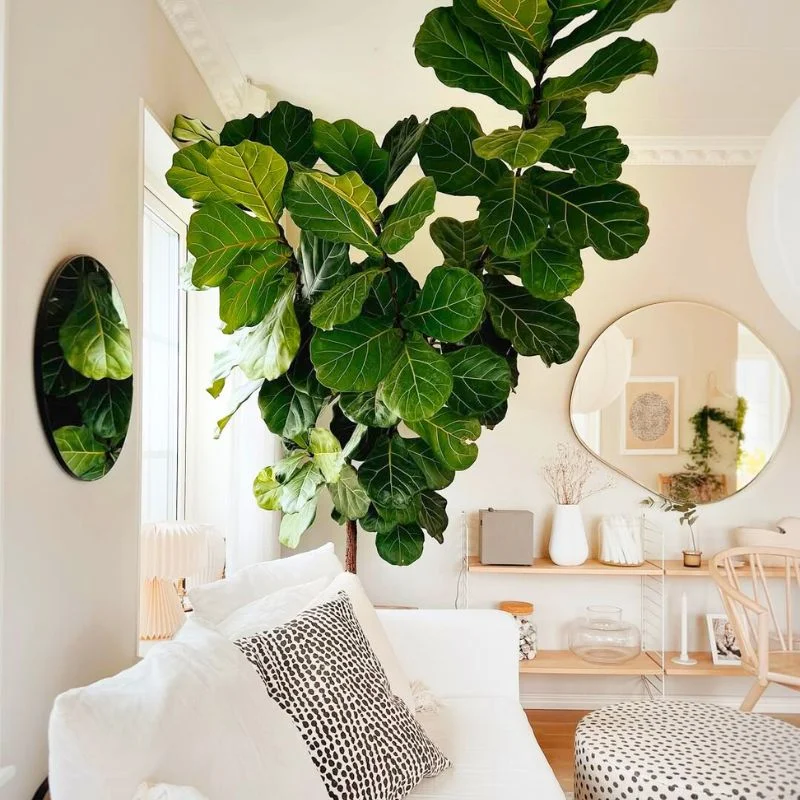Unusual, gorgeous, tropical. A banana-like plant. That's the Strelitzia, also known as the Bird of Paradise, the Wild Banana Plant, or the Crane Plant. Strelitzias make stunning architectural plants, due to their tall erect stems and wide, banana-like, paddle-shaped leaves. The Strelitzia nicolai is the one with larger leaves and is white flowering. The nicolai is a relative of Strelizia reginae (the orange flowering Bird of Paradise). The latter has much smaller, and thinner leaves.
The Bird of Paradise, a.k.a. Strelitzia is Rare to Be an Indoor Flowering Plant
Many often mistakenly call this plant a banana plant because it looks like it. The Strelitzia is named for the beautiful, orange crane-like flowers that they produce, which look like a bird of paradise. You should keep in mind there are two types of Strelitzia. The Strelitzia nicolai and Strelitzia reginae will further be discussed, giving important features of each.
Under the right conditions, including full, southern light exposure, proper humidity, and temperature, Bird of Paradise can flower indoors, although this is rare. This plant is widely sold as an indoor green and non-flowering plant. It is commonly planted outdoors in regions with warm climates.
The Bird of Paradise fits perfectly in nowadays 'green trends' in which many homes are filled with larger green plants that can be seen as interior design objects. See also: 'Are Expensive House Plants the New Interior Design Objects?'
Bird of Paradise Can Be Beautifully Used in Arrangements
Bird of Paradise can be creatively used to create flower arrangements that speak tropical vibes because, after all, the intriguing and curious shape of this plant is what gives it its tropical characteristic. The bright orange color and distinctive shape are what will give any flower arrangement the center of attention. How could it not? The particular shape is what draws the attention of many, and will indeed make a stunning arrangement, especially during the spring, summer, and fall seasons.
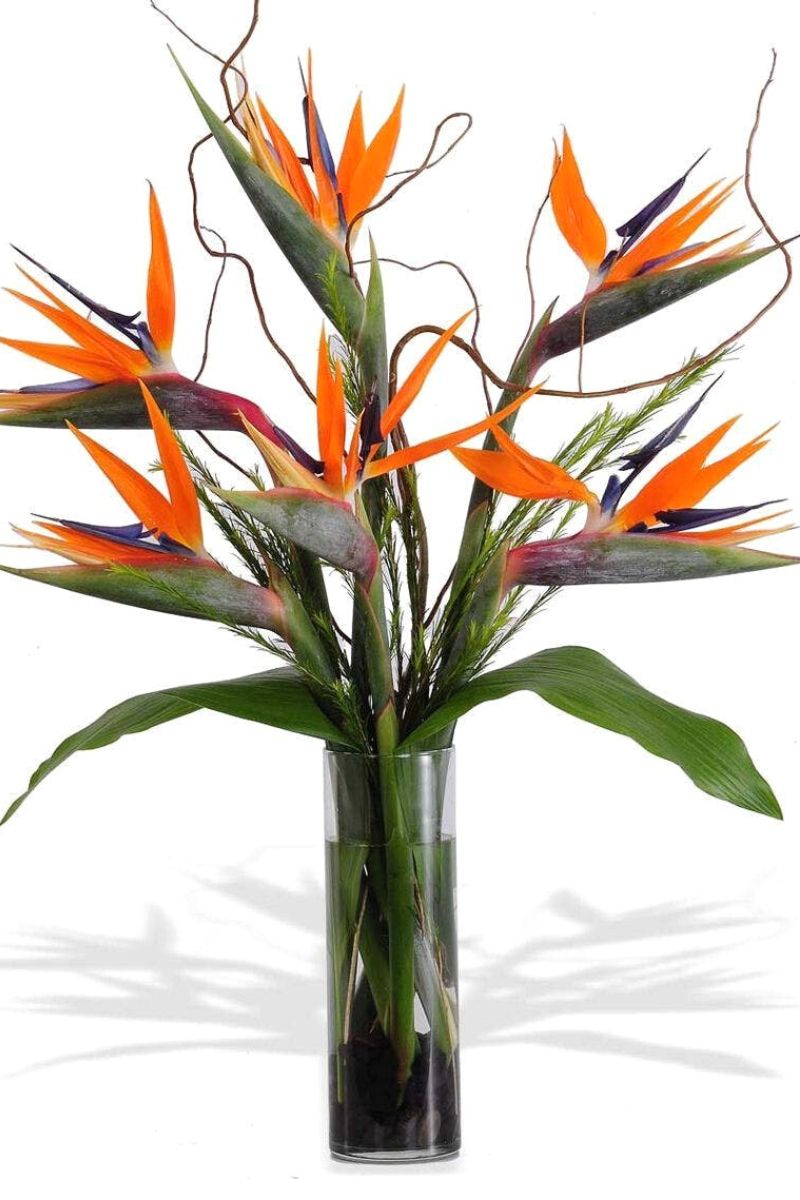
These dramatic tropical blossoms are used in large vase arrangements and contemporary floral designs. The stems are very large and heavy. The use of chicken wire is suggested for extra support when designing in floral foam.
Bird of Paradise Is an Ideal House Plant As Well
Bird of Paradise plants are native and originate in the subtropical coastal areas of southern Africa, it has been cultivated worldwide, and it has been naturalized in North, Central, and South America, as well as in Portugal, where it is the national flower. Its exotic appearance, with unique and brightly colored flowers that look like the head of a bird, has made it a favorite with horticulturists, designers, florists, and gardeners. In full flower, a bird-of-paradise looks a bit like several birds hidden in a clump of foliage, craning their necks up and turning their plumed heads and pointed beaks in different directions.
It is in their originating areas where they can grow up to 20 feet tall. They are found along coastal regions and riverbanks or enjoying some much-needed shade at forest edges. It is also considered native to Mozambique, Botswana, and Zimbabwe. And, it is naturalized in Eastern Mexico.
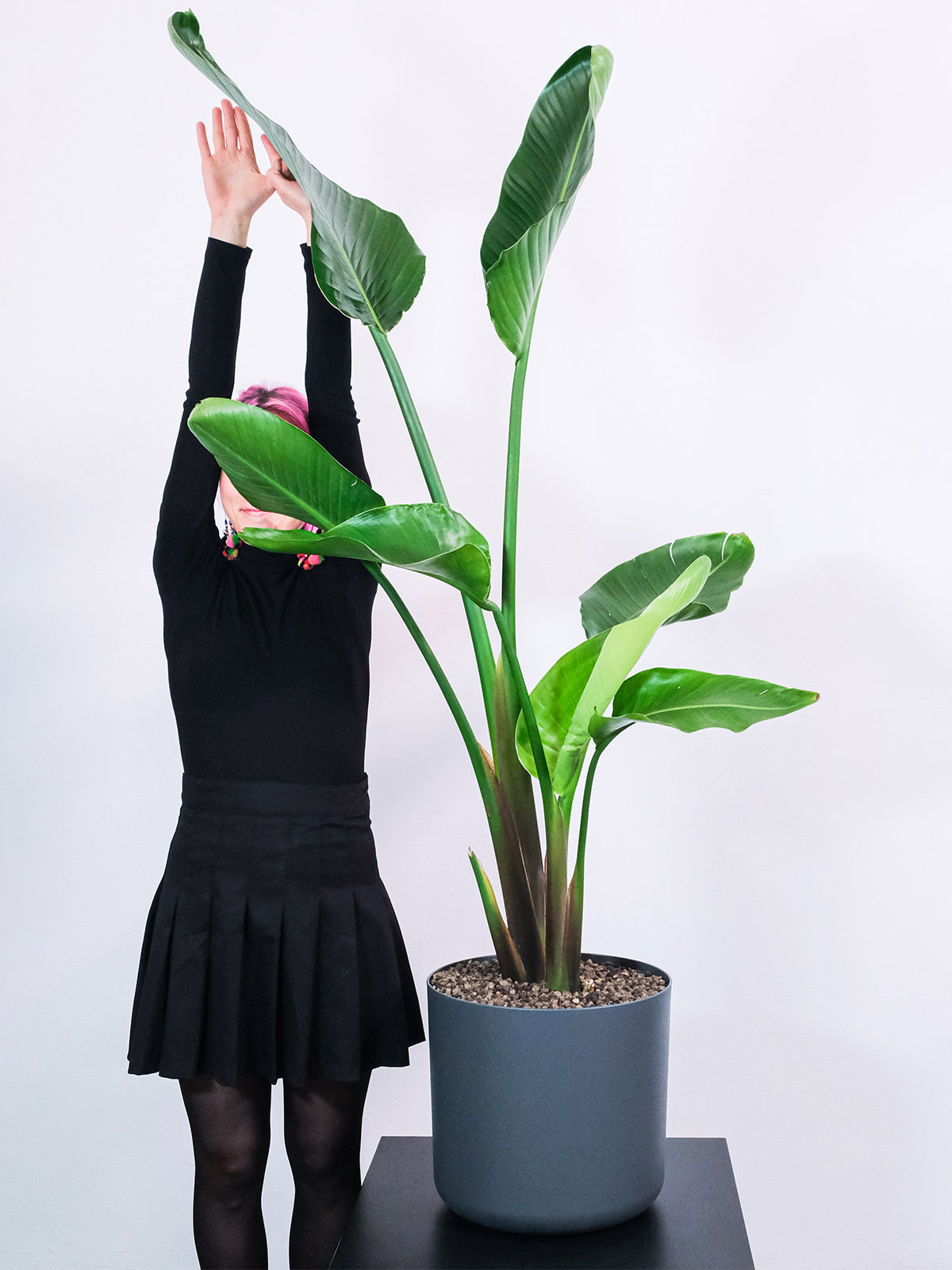
Indoors, this plant is Ideal for a place where it is allowed to get some space. Although the pot doesn't have to be that big, the leaves of the plant itself will spread out and can get quite voluminous. Especially in darker spaces, where there's less direct sunlight, branches tend to get a little weaker and will start to hang a bit. Support from a stick is often needed. When you give this plant a big and bright space, it will reward you with stunning, enormous leaves month after month; summer and winter.
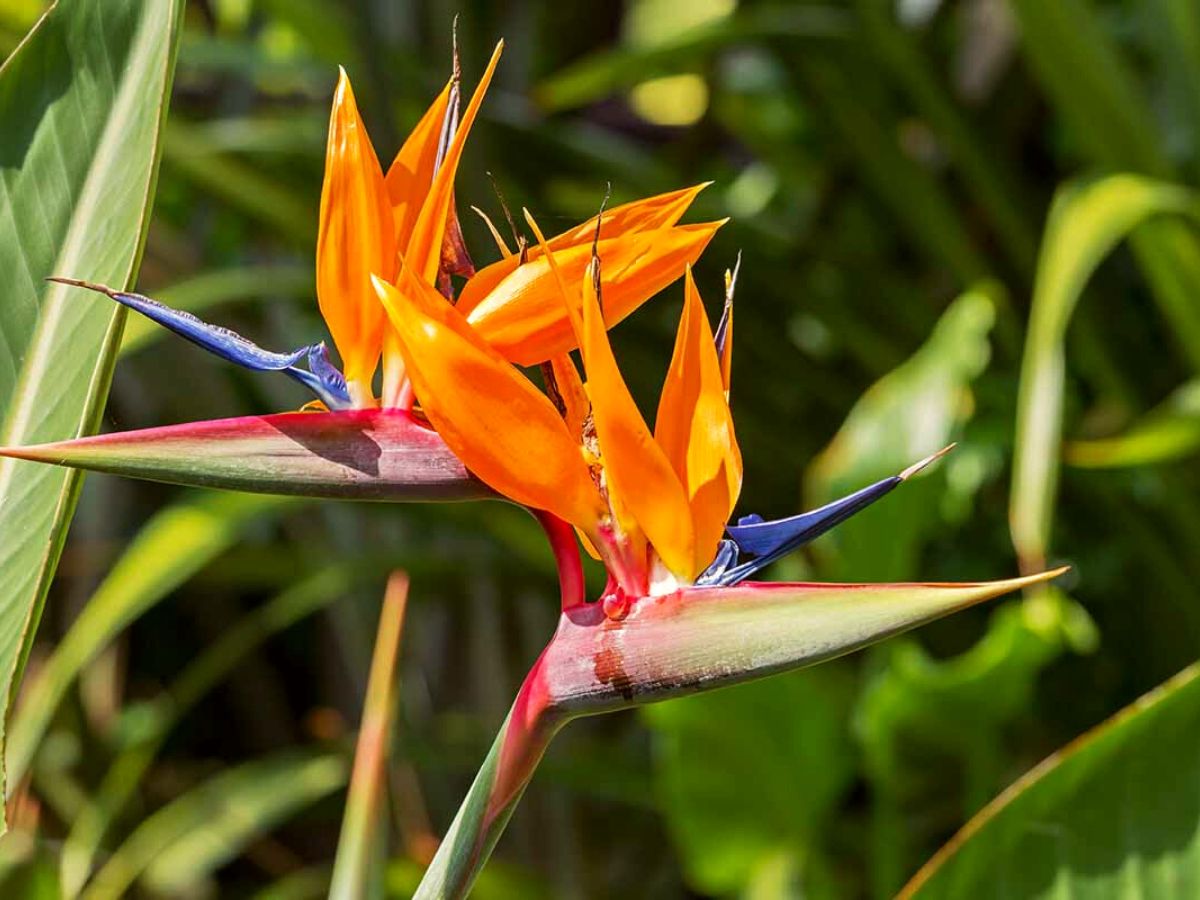
Leaves With Breaks and Slits
The breaks and slits in your Bird of Paradise’s leaves aren’t a cause for concern. These slits occur naturally in the wild to help the plant become more aerodynamic in wind and rain. In having evolved so, they eliminate the risk of being snapped in half by a strong wind. Others also suggest that these splits allow sun rays to reach the lower leaves of the plant in their native environment.
.jpg)
A Queen of the Indoor Plant World
So yes, the Bird of Paradise can definitely be considered the queen of the indoor plant world. As a large, upright plant, one of the biggest advantages is, that it doesn't take up too much floor space. Bird of Paradise adds a rich, tropical flair to your space with its glossy, banana-shaped leaves that fan out. It is relatively easy to take care of because it adapts to a wide spectrum of light conditions from direct sun to low, indirect light. Pay close attention to the best care tips for your Bird of Paradise plant to properly grow and prosper.
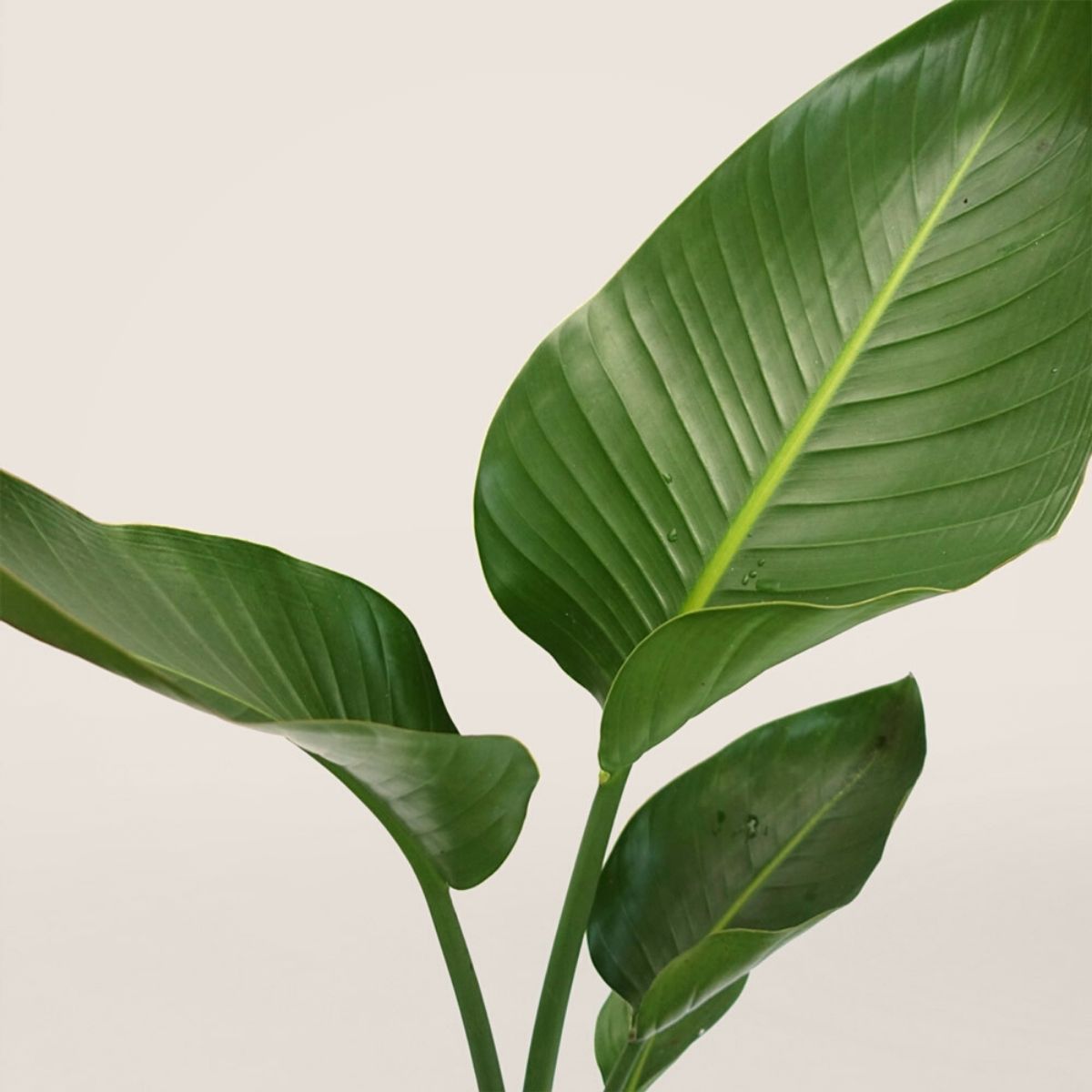
Most Popular Strelitzia
There are two predominating types of Bird of Paradise plants denominated Strelitzia reginae and Strelitzia nicolai. Time to dive deep into knowing more about each one.
1. Strelitzia Reginae
Strelitzia reginae is the most popular type of 'Bird of Paradise' plant, widely known around the world and one which many have nowadays as part of their indoor jungle. The bird of paradise Strelitzia reginae gets its name from the fact that its flower is made of three bright orange petals and three blue petals which are fused together into a single bud. As the flower blooms, each petal makes its debut and the resulting shape mirrors that of a tropical bird in flight.
One of the most renowned Strelitzia reginae growers in the Netherlands is MVO Strelitzia. It is a family business that specializes in growing the best-quality Strelitzia reginae in the region. The plant can be sold individually for decorative purposes as well as to florists, retail, and wholesale purposes. Learn more about MVO Strelitzia here.
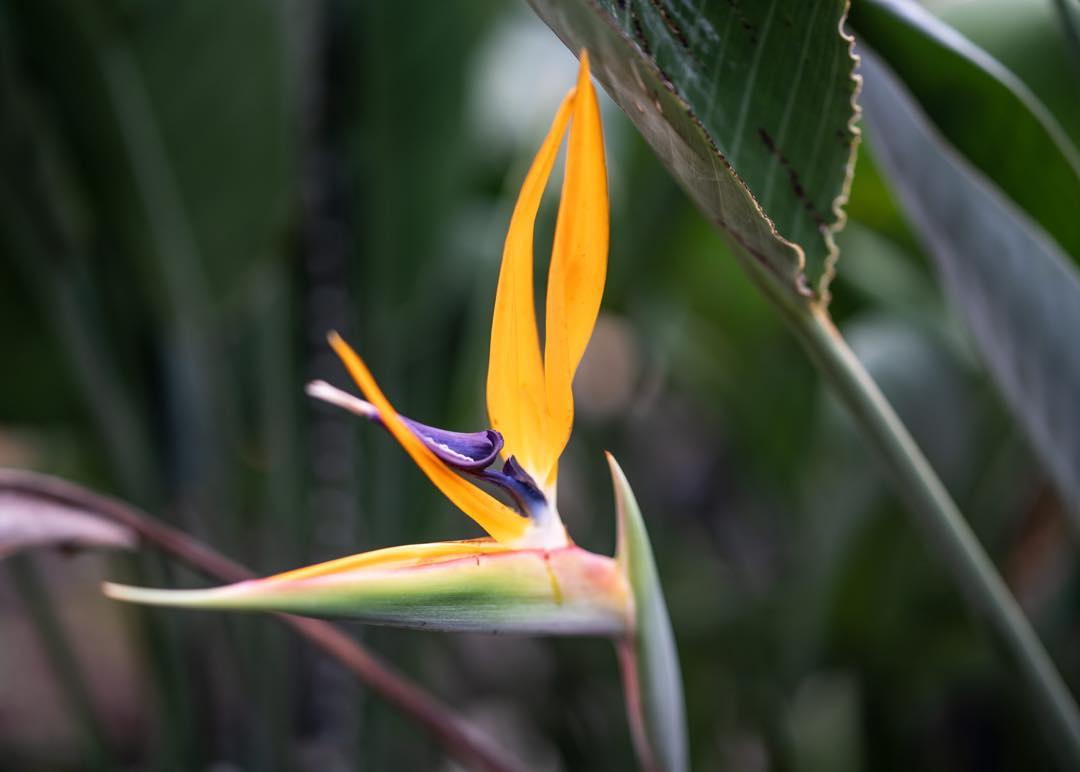
2. Strelitzia Nicolai
Strelitzia nicolai is a beautiful plant that can be successfully grown indoors and outdoors. However, the biggest drawback is its size; it can grow to 2 meters tall. Differentiating from Strelitzia reginae, the flowers of this tree have white sepals with blue petals and consist of five purplish blue, boat-shaped sheaths. The whole flower resembles the head of the bird, with a white crest and purple beak. The tree flowers throughout the year with a peak in spring-summer.
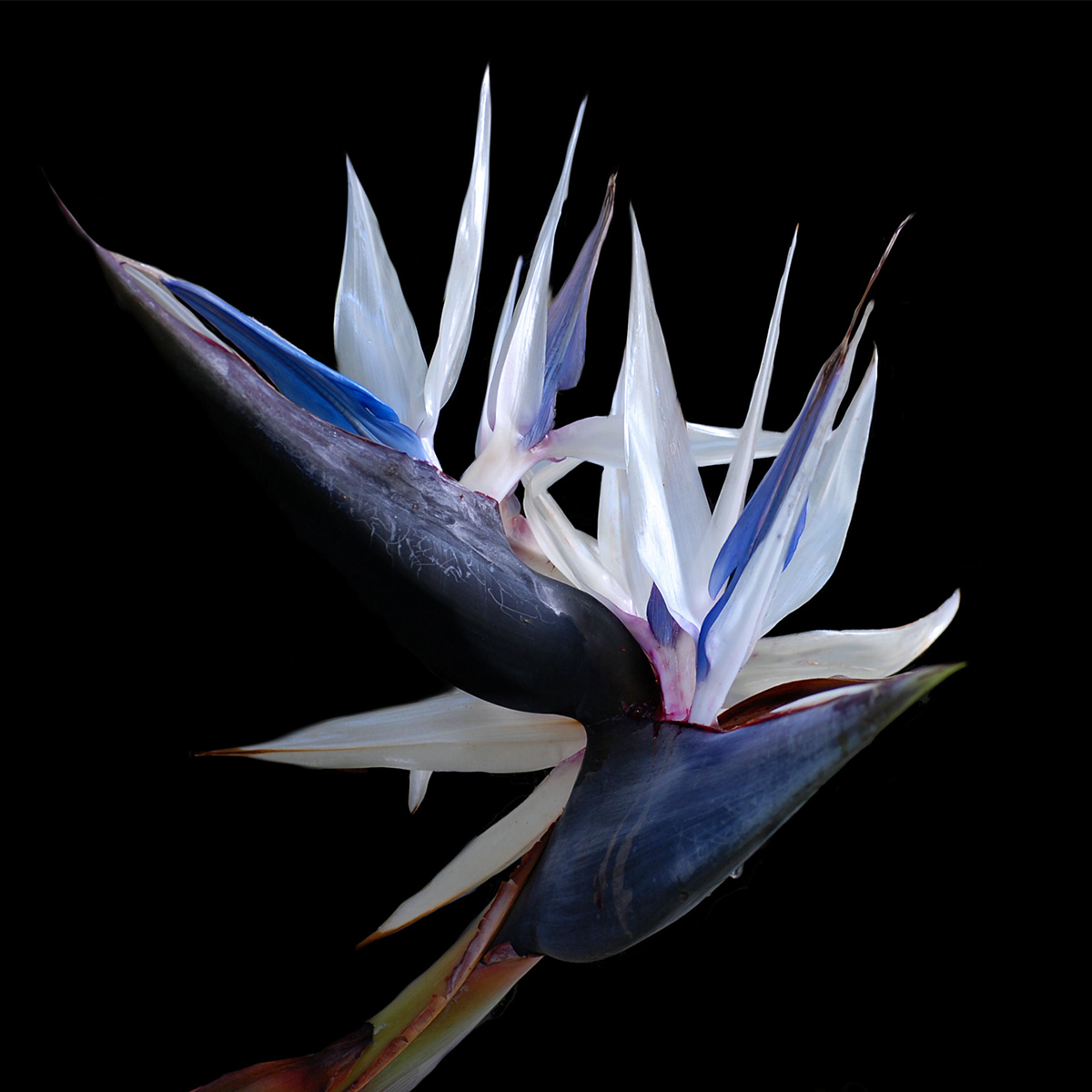
How to Care for the Bird of Paradise Plant
Having the correct insights on how to care for the Strelitzia plant is crucial for you to enjoy more of your houseplant and see it progress and flourish in the best way possible.
Light
Choose a location for your Bird of Paradise away from air vents and drafts where the plant will get at least four hours of southern, western, or eastern exposure. Though they can tolerate medium light conditions, the Bird of Paradise will not thrive long-term without adequate sunlight, so we always recommend placing them in bright light.
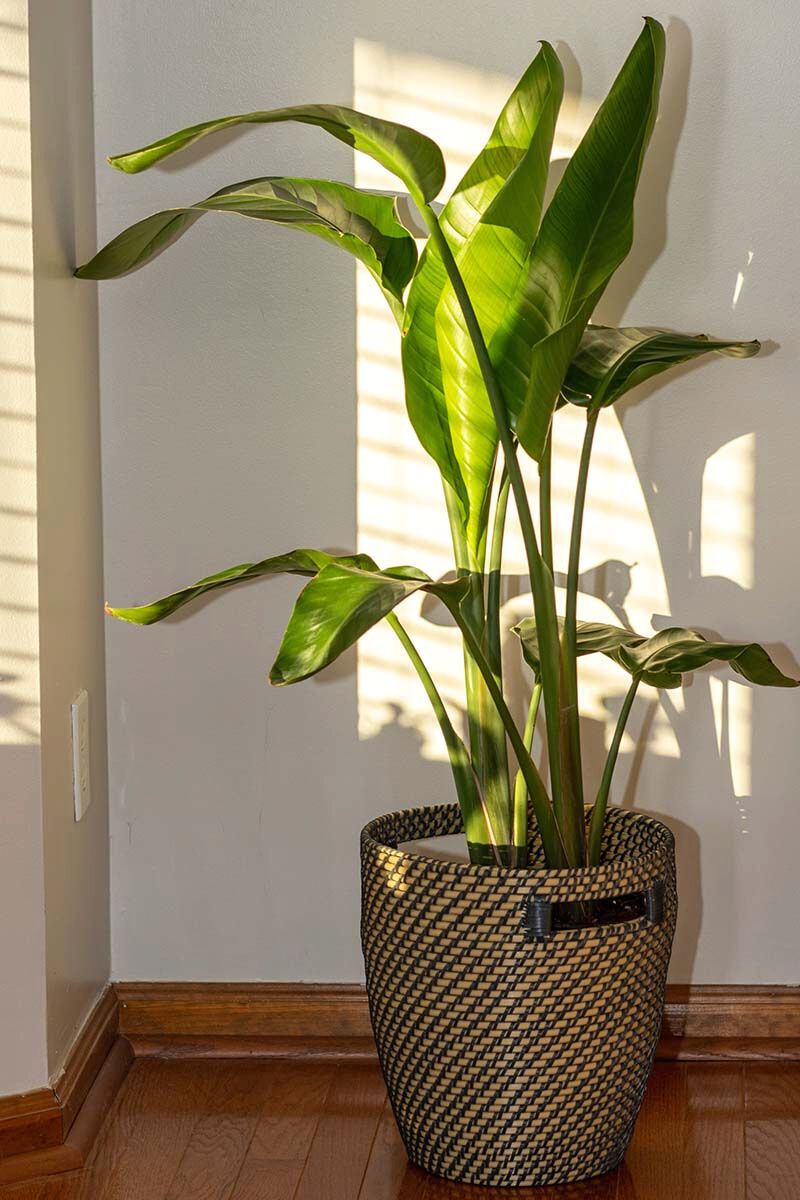
Water & Soil
Birds of Paradise enjoy moist (but not soggy) soil, and being allowed to dry out slightly between waterings. Try not to let the soil dry completely through the pot, but also avoid overwatering. Allow the top 5-8 cm of the soil to become dry between waterings, but below that should remain moist. These plants do particularly well in our self-watering containers.
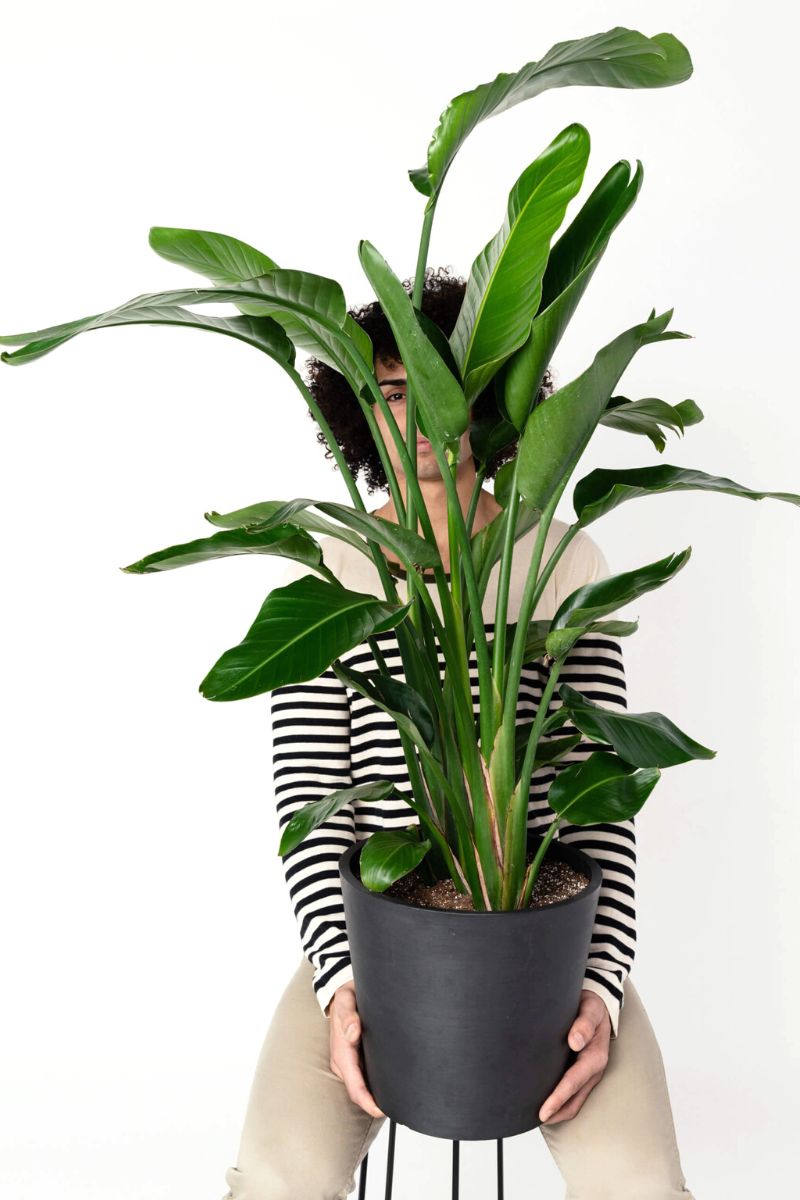
Fertilizer
During spring and summer, fertilize once a month with a general-purpose fertilizer. No fertilizer is necessary during the winter when plant growth naturally slows.
Bird of Paradise Plants Are Susceptible to Pests
Scale, mealy bugs, and spider mites can harm birds of paradise, but these pests are simple to identify and treat. In the case of mealy bugs, large numbers tend to colonize in whitish clumps on shoots, and their presence often reduces plant vigor significantly. A mealybug infestation can even lead to shooting dieback and premature leaf drop.
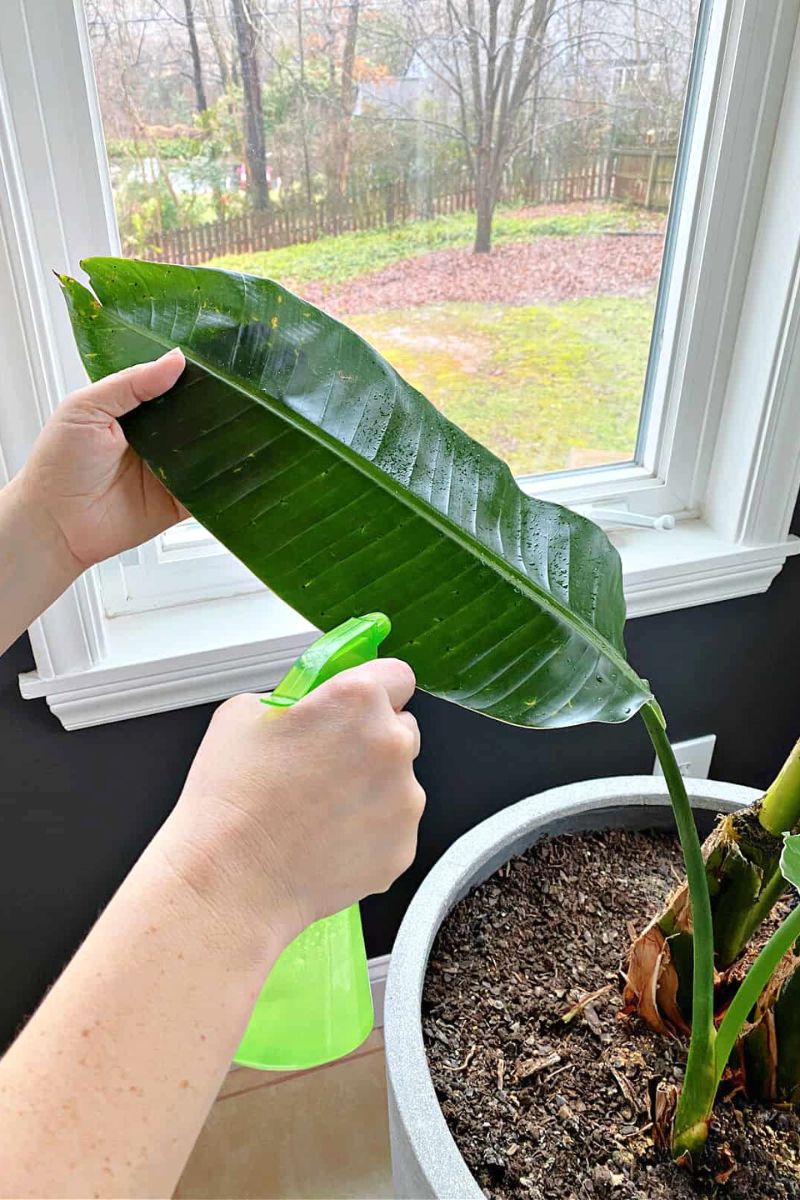
In case you notice your Bird of Paradise has been infested with a pest, you can simply use a soft towel or warm, soapy water to wipe the leaves, but do it in a strong manner so you know you're wiping all the pests away. Take into account that pesticides and alcohol should be avoided because they can damage the finish on the leaves.
Bird of Paradise Propagation
You must first take into account a number of factors before attempting to propagate a Bird of Paradise plant. First and foremost, you can't merely replant a plant by chopping off a leaf. While some plants can be propagated from cuttings of their leaves and stems, the Bird Of Paradise needs more to grow successfully. The stem or leaf alone won't have enough tissue to grow a new plant, therefore you'll need to cut a section of the plant's root to successfully propagate it.
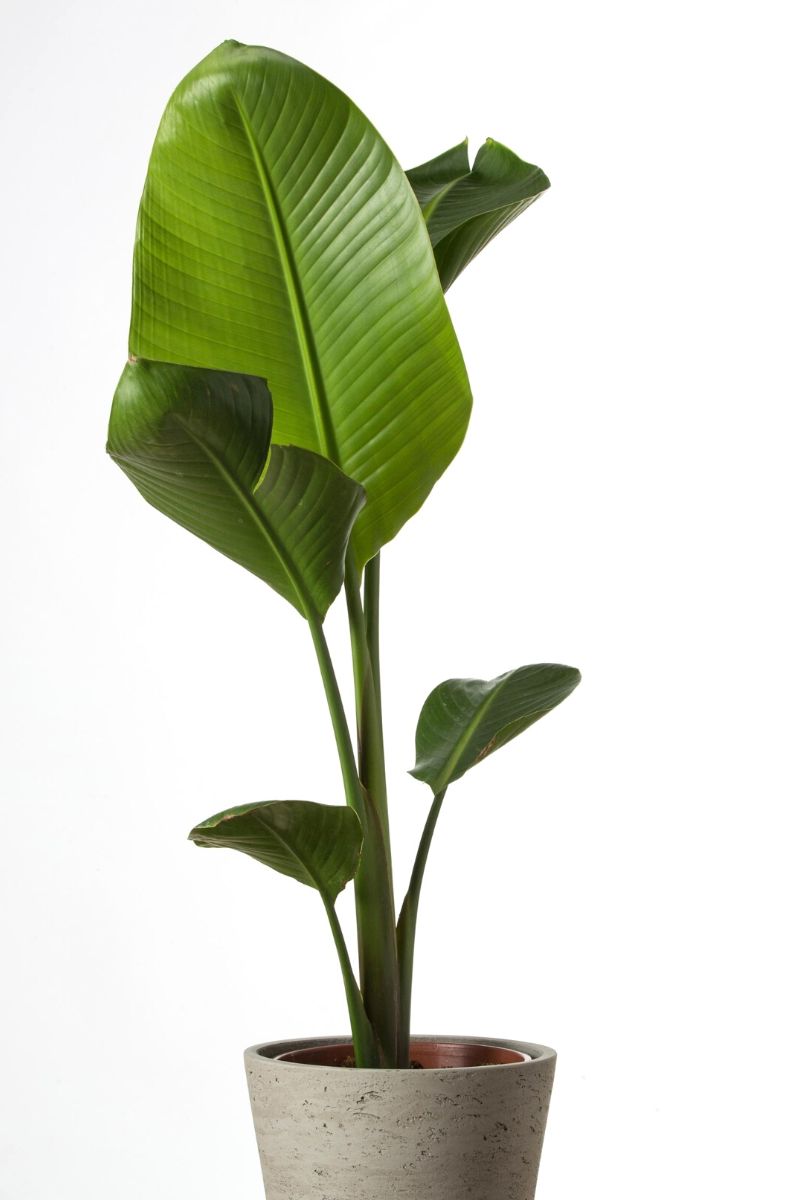
Ideally, propagation should occur in the early spring, preferably while you are already replanting a Bird of Paradise that’s outgrown its pot. While it’s out, cut a piece of the bulb or the root with a sharp, clean knife. You can sprinkle some rooting hormone on the open cuts to encourage quicker and greater root depth. With each plant division, there should be a fan with attached roots for the regrowth plant. Then you can plant the bird of paradise root division in a small and clean pot with high-quality planting soil.
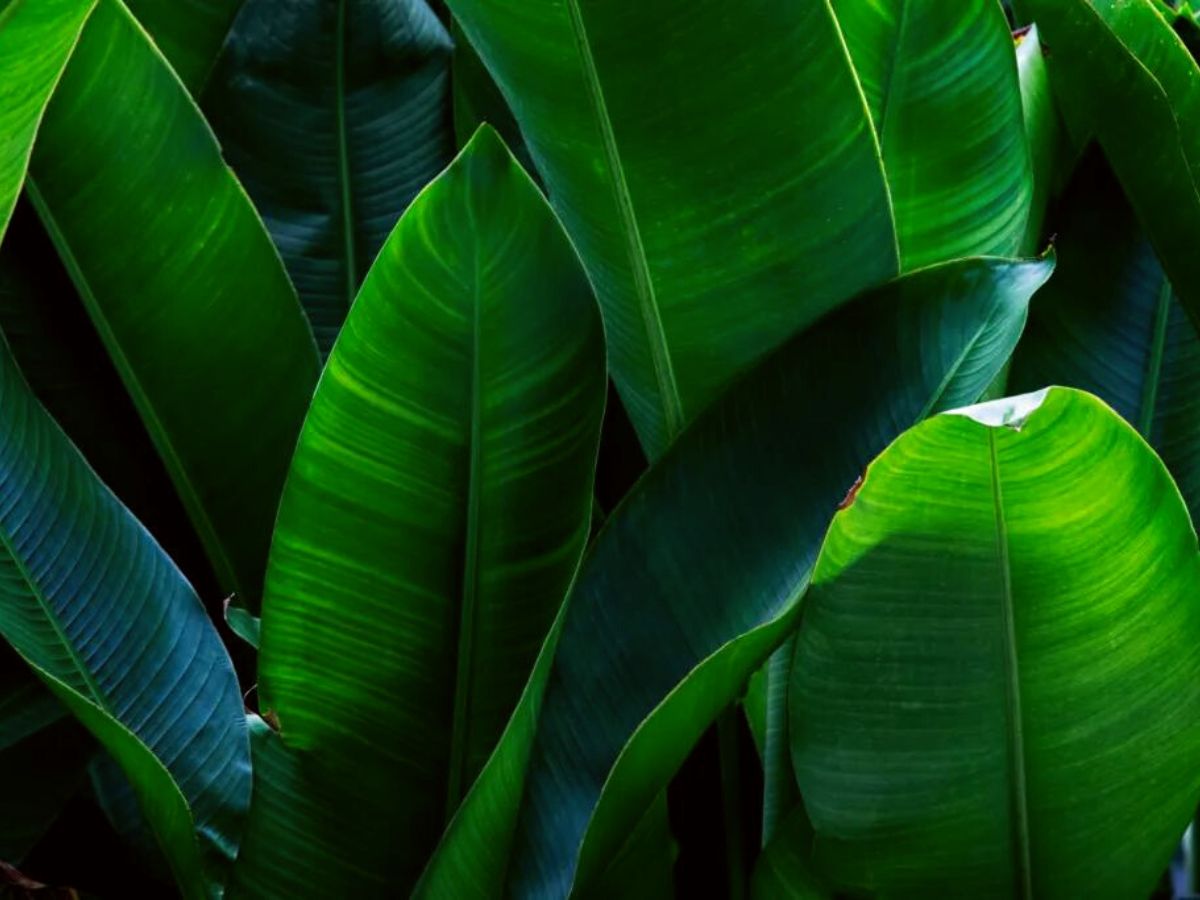
Now you have a complete Strelitzia guide all the way from its origin to care handles and the propagation process!

